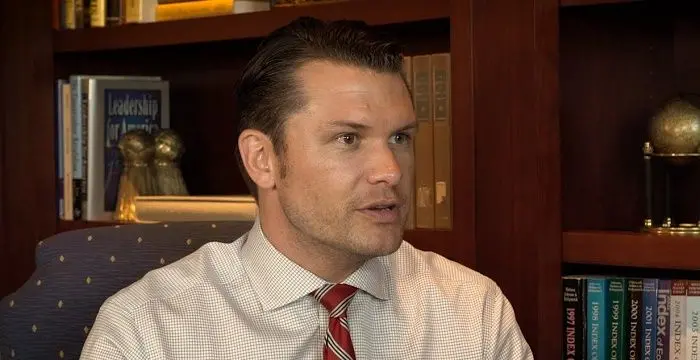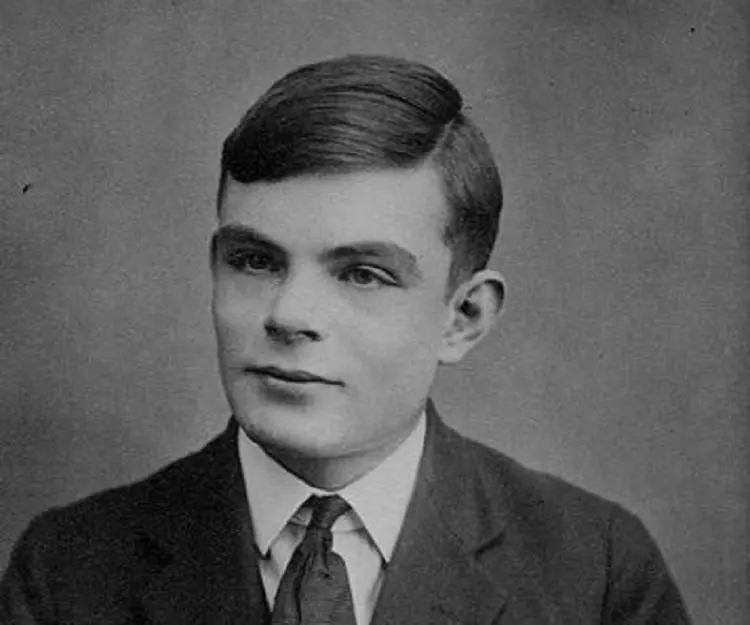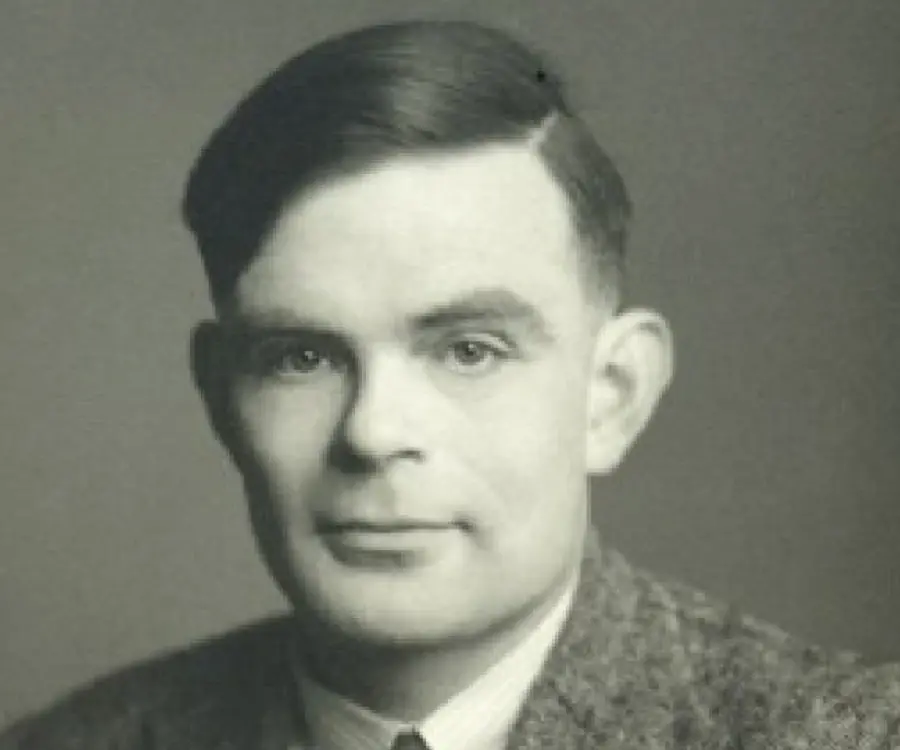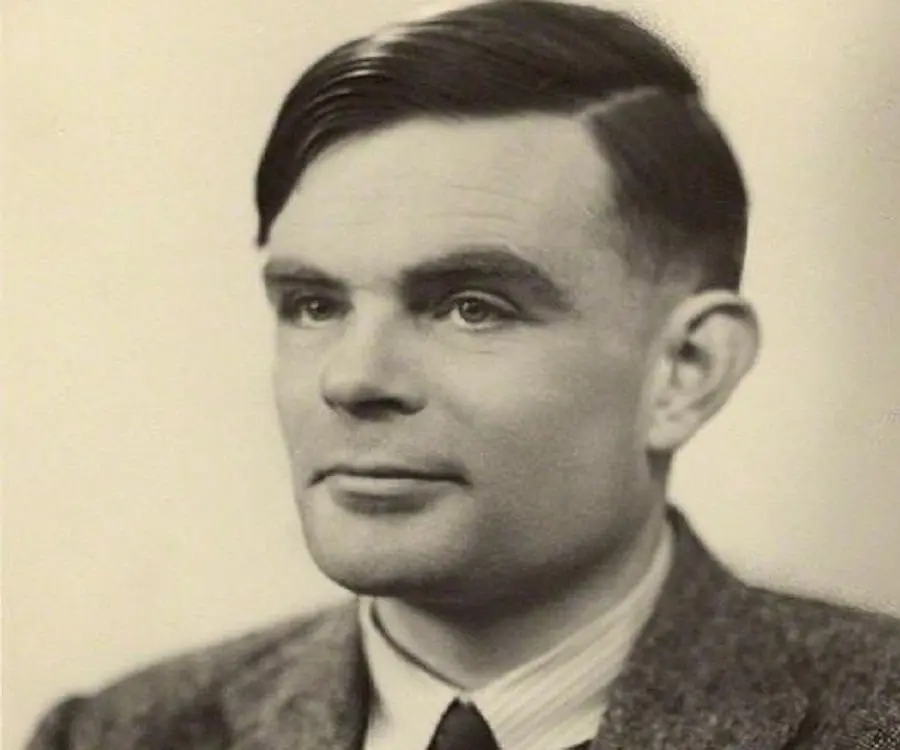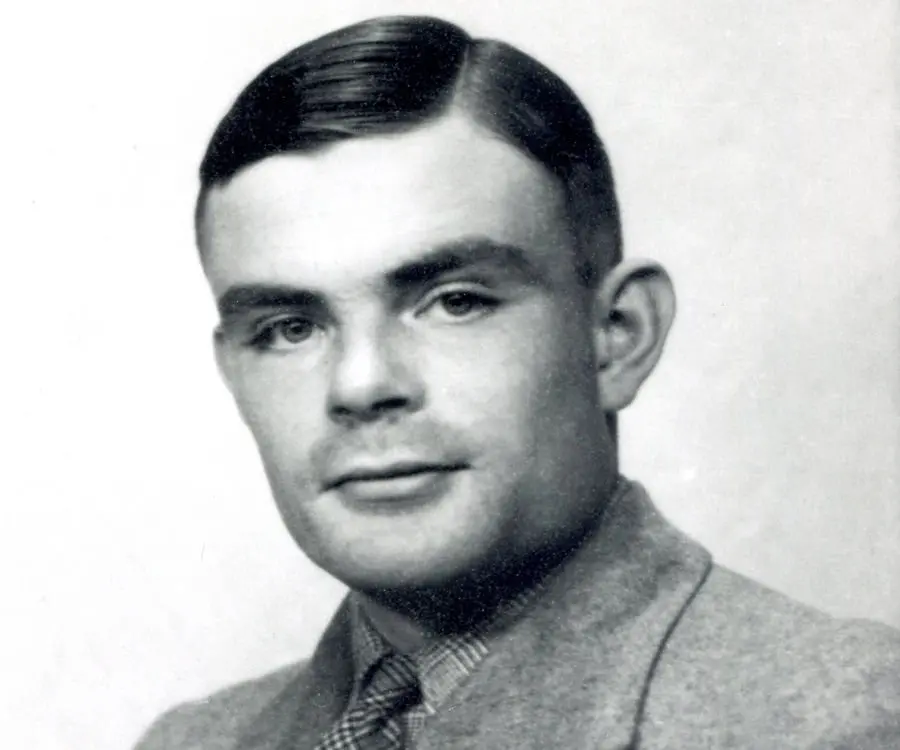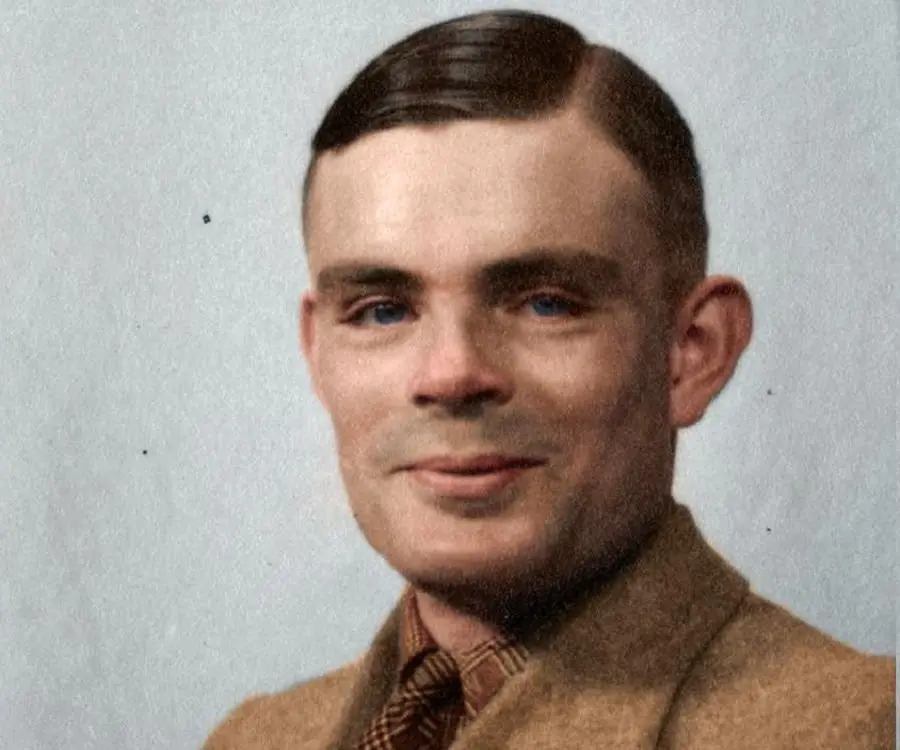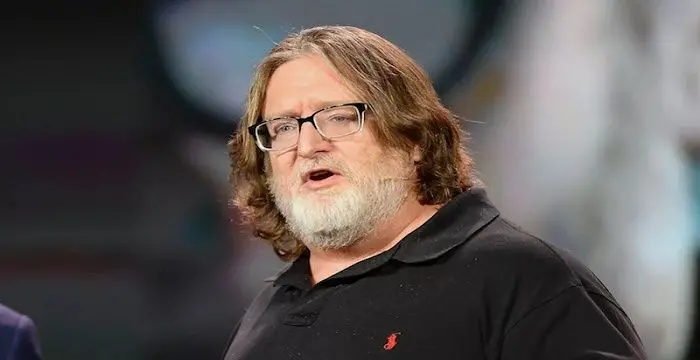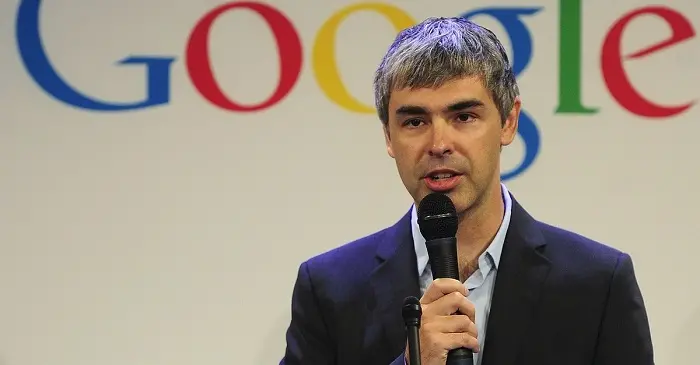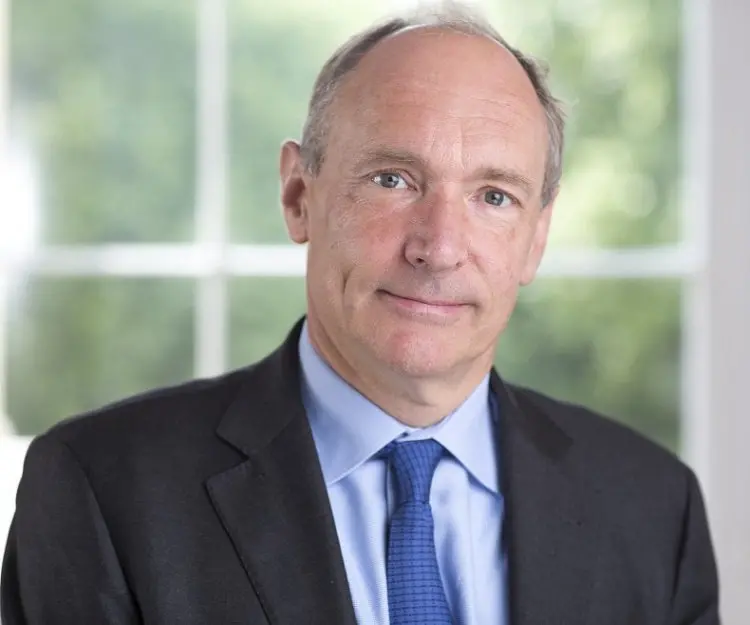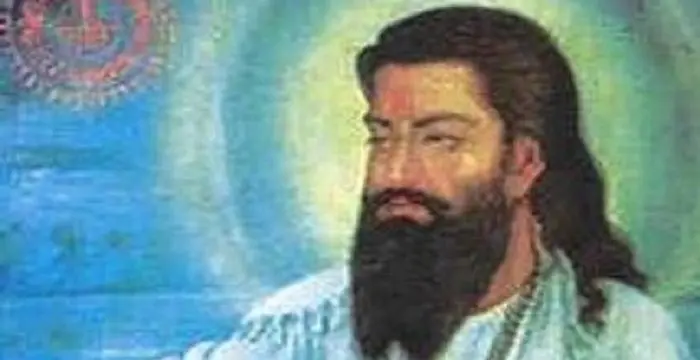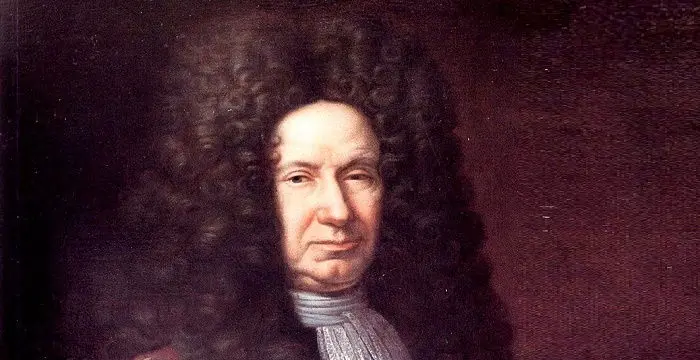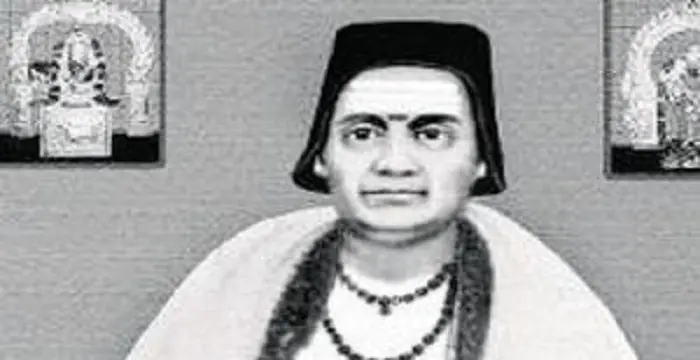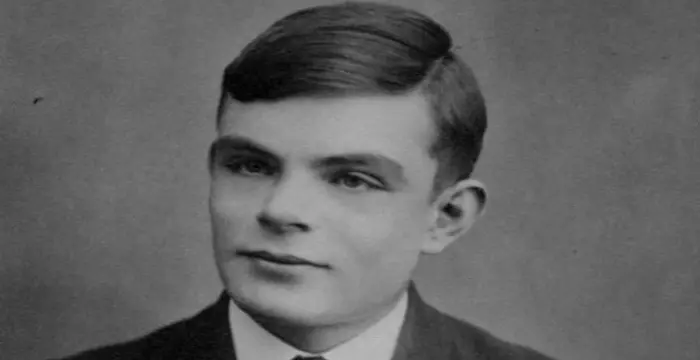
Alan Turing - Cambridge University, Life Achievements and Childhood
Alan Turing's Personal Details
Alan Turing was a famous mathematician and World War II cryptanalyst, working for the British government
| Information | Detail |
|---|---|
| Birthday | June 23, 1912 |
| Died on | June 7, 1954 |
| Nationality | British |
| Famous | Cambridge University, Princeton University, Scientists, Mathematicians, Computer Scientists |
| Siblings | John Turing |
| Known as | Alan Mathison Turing |
| Universities |
|
| Notable Alumnis |
|
| Discoveries / Inventions |
|
| Cause of death |
|
| Birth Place | Maida Vale |
| Religion | Atheism |
| Gender | Male |
| Father | Julius Mathison Turing |
| Mother | Ethel Sara Stoney |
| Sun Sign | Cancer |
| Born in | Maida Vale |
| Famous as | Computer Scientist |
| Died at Age | 41 |
// Famous Princeton University
Wentworth Miller
Wentworth Miller is an American actor and screenwriter who achieved recognition for his role in the TV series ‘Prison Break’.
Pete Hegseth
Pete Hegseth is a FOX News Channel contributor from America. Check out this biography to know about his childhood, family life, achievements and fun facts about him.
Terence Tao
Terence Tao is an Australian- American mathematician who has contributed enormously to the field of mathematics. Check out this biography to know about his childhood, family life and achievements.
Alan Turing's photo
Who is Alan Turing?
Computers would probably have been non-existent if it wasn't for famous British mathematician, Alan Turing. Having been a child prodigy, he went on to pursue his PhD from the 'Princeton University'. Soon, he became an important member of a group of code-breakers in the 'Government Code and Cypher School' ('GC&CS') in Bletchley Park. He was given the daunting task of deciphering the ever-changing German codes sent through the ingenious machine, 'Enigma'. Alan proved the almost impossible task, possible with his 'bombe' device, which used a technique called 'Banburismus'. Eventually this mathematician and his team of code-breakers were successful in defeating the 'Enigma'. However, two code-breakers from his team were found out to be Soviet spies, and thus the work was declared highly confidential. For a long time, no records of Turing's work were available, and the 'Official Secrets Act' prohibited him from talking about his work to anyone. His homosexuality caused him to be convicted, though the British government has apologized posthumously in recent times. His works and life has recently been popularized by the ‘Academy Award’ winning movie, ‘The Imitation Game’, released in 2014. Read on and explore the life and works of this brilliant mathematician and code-breaker.
// Famous Computer Scientists
Gabe Newell
Gabe Newell is an American computer programmer and businessman, best known as the co-founder of ‘Valve Corporation.’ This biography provides detailed information about his childhood, family, personal life, career, etc.
Larry Page
Larry Page is the co-founder of search engine Google. This biography of Larry Page provides detailed information about his life, achievements, works & timeline.
Tim Berners-Lee
Tim Berners-Lee is a British computer scientist who invented the World Wide Web. This biography of Tim Berners-Lee provides detailed information about his childhood, life, achievements, works & timeline.
Childhood & Early Life
Alan Mathison Turing was born to Julius Mathison and Ethel Sara on June 23, 1912, in Paddington, London. Julius was employed with the 'Indian Civil Service', and with his wife, he had another son, John.
He pursued his elementary education from 'St Michael's', later studying at the 'Sherborne School' in Dorset, starting from 1926.
In 1931, he began attending 'King's College', at the 'University of Cambridge', graduating in mathematics three years later with top scores.
He began pursuing a fellowship from 'King's College' in 1935, during which he published the paper, 'On Computable Numbers, with an Application to the Entscheidungsproblem'.
It was in this paper that he drew references from Austrian mathematician Kurt Gödel's research to develop simple imaginary devices which came to be called 'Turing machines'.
According to his hypothesis, such a machine is capable of calculating anything that can be quantified. The modern computer came into existence because of this assumption made by the young Turing.
During 1936-38, he was taught at the 'Princeton University', by famous American logician, Alonzo Church. Along with lessons in mathematics, Alan was taught cryptology, and towards the end of this period, he was able to get his PhD from the university. After this he was also taught by Ludwig Wittgenstein, at the 'University of Cambridge'.
Career
In September 1938, Turing took up a part-time job at the 'Government Code and Cypher School' ('GC&CS'), an organization that specialized in breaking war codes. The 'GC&CS' was located at Bletchley Park during the World War II, and it was here that Alan was accompanied by fellow code-breaker Dilly Knox.
The young mathematician was appointed to break the codes sent by German officials, during World War II, through the radio machine, 'Enigma'. In 1939, the 'Polish Cipher Bureau' had shared with the 'GC&CS', their method of trying to break the codes.
Knox and Alan tried to develop the complex Polish techniques into a simpler and more workable method. The indicators referred to by the Polish were not too reliable, since they could be altered at any point of time by the Germans. Turing thus tried using decoding methods, and developed a device known as the 'bombe'.
In December, 1939, he developed a decrypting technique using statistical analysis, and called it the 'Banburismus'. The 'Banburismus' had the potential to decipher the 'Enigma' codes, which were more complex than those used by other warring countries.
The first bombe began functioning in Bletchley Park, on March 18, 1940, and it was built to electrically arrive at logical conclusions about what the Enigma indicators meant.
By the following year, Turing and his colleagues, Hugh Alexander, Gordon Welchman, and Stuart Milner-Barry, were getting agitated with their slow progress. They needed more people and funding, and sought out Prime Minister Winston Churchill for help. Churchill obliged to the urgency shown, and soon there were over 200 ‘bombes’ in place.
In 1942, the brilliant mathematician went to the United States to study the methods of breaking the 'Naval Enigma' codes being employed by logicians at the 'Computing Machine Laboratory', in Dayton, Ohio.
The same year, he invented the 'Turingery' method to combat and decipher coded messages being sent by Germans through their newly built 'Geheimschreiber' typing machine. The device, based on the new technique, built by Alan, was given the name 'Tunny' at Bletchley Park.
During 1945-47, Turing began working at the 'National Physical Laboratory' ('NPL'), where he developed a machine called the 'Automatic Computing Engine' ('ACE').
Around the same time, he produced a research paper describing his conception of computer that could hold pre-fed programs. A crude and incomplete model of the 'ACE' was built for testing purposes in 1950, when the illustrious mathematician was in Cambridge.
Computers like the 'Bendix G-15', designed in America, and 'Electric DEUCE', built in England, are based on the 'ACE'.
In 1948, Turing began working at the 'Computing Laboratory' initiated by mathematician Max Newman, located in the 'University of Manchester'. It was here that the former began showing an inclination towards mathematical biology.
The same year, he also worked as a Lecturer at the 'University of Manchester's Department of Mathematics. During this time, with help from his friend, D. G. Champernowne, he began developing a chess program, which could be played on a computer that he had envisioned but not built.
In 1948, he also stated the 'LU decomposition method', a pioneering technique which is presently used to solve matrices.
The following year, he was promoted at the university to the post of Deputy Director of the 'Computing Laboratory'. He developed a type of software named 'Manchester Mark 1', while continuing to research on abstract mathematics and artificial intelligence.
He developed the 'Turing Test', which can judge whether a machine is "intelligent" or not. In 1950, the chess program was built, with Champernowne's help, and was named 'Turochamp'.
From 1952-54, despite failing health, he pursued research on mathematical biology, and produced the thesis titled 'The Chemical Basis of Morphogenesis'.
Major Works
This scientist is known for having pioneered the concept of modern-day computers, by introducing the idea of a ‘Turing Machine’, which is simple, and yet capable of solving any form of algorithms that can be measured and quantified.
Awards & Achievements
Alan was awarded the 'Smith's Prize' in 1939, by the 'University of Cambridge', for his exceptional contribution in the field of applied mathematics.
In 1945, this great mathematician was honoured by King George VI, with the 'Most Excellent Order of the British Empire', for his services during the World War II.
Personal Life & Legacy
While studying at the 'Sherborne School', Alan befriended classmate Christopher Morcom, who the former fell in love with. The blossoming friendship abruptly ended when Morcom died of bovine tuberculosis.
In 1941, he proposed to Joan Clarke, who was his colleague at Bletchley Park. The two got engaged, but the marriage was soon called off when Turing decided it was unfair getting married to Clarke despite being homosexual.
At the age of 39, Alan got into a relationship with 19 year old, Arnold Murray. During a burglary investigation at the mathematician's house, personal details about his homosexuality came into light, and Alan was arrested on charges of indecency.
After conviction in 1952, he was given a choice between hormonal castration using medicines or imprisonment. The ingenious logician chose medication so that he could continue his scientific work at home.
On June 8, 1954, Alan was found poisoned at home, and after the autopsy, it was concluded that he had taken his own life by consuming large quantities of potassium cyanide.
Several awards have been named after this mathematical genius, and many biographies have been penned, the most notable being by the 'Royal Society'.
A novel, 'Cryptonomicon', by American writer, Neal Stephenson, published in 1999, refers to this famous mathematician.
The 2014 movie, 'The Imitation Game', was featured on Alan's life, with British actor Benedict Cumberbatch playing the mathematician's role.
Several universities have named rooms, buildings, and even computer programs, after the distinguished mathematician.
Trivia
This famous British mathematician was also a fast long-distance runner, who appeared for the 'British Olympic' try-outs in 1948. He lost out to famous runner Thomas Richards, falling short by a meagre 11 minutes.
// Famous Scientists
Juliane Koepcke
Juliane Koepcke is a German-Peruvian biologist, who was the lone survivor among the 92 passengers and crew of the ill-fated LANSA Flight 508 that crashed in the Peruvian rainforest on 24 December 1971. Know more about her life in this biography.
Henry Cavendish
Henry Cavendish was a theoretical chemist and physicist, renowned for discovery of hydrogen and calculation of the mass of earth. To know more about his childhood, profile, timeline and career read on
Konstantin Tsiolkovsky
Konstantin Tsiolkovsky was a Russian rocket scientist and a pioneer of astronautics. This biography provides detailed information about his childhood, family, personal life, career, achievements, etc.
Alan Turing biography timelines
- // 23rd Jun 1912Alan Mathison Turing was born to Julius Mathison and Ethel Sara on June 23, 1912, in Paddington, London. Julius was employed with the 'Indian Civil Service', and with his wife, he had another son, John.
- // 1926He pursued his elementary education from 'St Michael's', later studying at the 'Sherborne School' in Dorset, starting from 1926.
- // 1931In 1931, he began attending 'King's College', at the 'University of Cambridge', graduating in mathematics three years later with top scores.
- // 1935He began pursuing a fellowship from 'King's College' in 1935, during which he published the paper, 'On Computable Numbers, with an Application to the Entscheidungsproblem'.
- // 1936 To 1938During 1936-38, he was taught at the 'Princeton University', by famous American logician, Alonzo Church. Along with lessons in mathematics, Alan was taught cryptology, and towards the end of this period, he was able to get his PhD from the university. After this he was also taught by Ludwig Wittgenstein, at the 'University of Cambridge'.
- // Sep 1938In September 1938, Turing took up a part-time job at the 'Government Code and Cypher School' ('GC&CS'), an organization that specialized in breaking war codes. The 'GC&CS' was located at Bletchley Park during the World War II, and it was here that Alan was accompanied by fellow code-breaker Dilly Knox.
- // 1939The young mathematician was appointed to break the codes sent by German officials, during World War II, through the radio machine, 'Enigma'. In 1939, the 'Polish Cipher Bureau' had shared with the 'GC&CS', their method of trying to break the codes.
- // 1939In December, 1939, he developed a decrypting technique using statistical analysis, and called it the 'Banburismus'. The 'Banburismus' had the potential to decipher the 'Enigma' codes, which were more complex than those used by other warring countries.
- // 1939Alan was awarded the 'Smith's Prize' in 1939, by the 'University of Cambridge', for his exceptional contribution in the field of applied mathematics.
- // 18th Mar 1940The first bombe began functioning in Bletchley Park, on March 18, 1940, and it was built to electrically arrive at logical conclusions about what the Enigma indicators meant.
- // 1941In 1941, he proposed to Joan Clarke, who was his colleague at Bletchley Park. The two got engaged, but the marriage was soon called off when Turing decided it was unfair getting married to Clarke despite being homosexual.
- // 1942In 1942, the brilliant mathematician went to the United States to study the methods of breaking the 'Naval Enigma' codes being employed by logicians at the 'Computing Machine Laboratory', in Dayton, Ohio.
- // 1945 To 1947During 1945-47, Turing began working at the 'National Physical Laboratory' ('NPL'), where he developed a machine called the 'Automatic Computing Engine' ('ACE').
- // 1945In 1945, this great mathematician was honoured by King George VI, with the 'Most Excellent Order of the British Empire', for his services during the World War II.
- // 1948In 1948, Turing began working at the 'Computing Laboratory' initiated by mathematician Max Newman, located in the 'University of Manchester'. It was here that the former began showing an inclination towards mathematical biology.
- // 1948In 1948, he also stated the 'LU decomposition method', a pioneering technique which is presently used to solve matrices.
- // 1948This famous British mathematician was also a fast long-distance runner, who appeared for the 'British Olympic' try-outs in 1948. He lost out to famous runner Thomas Richards, falling short by a meagre 11 minutes.
- // 1950Around the same time, he produced a research paper describing his conception of computer that could hold pre-fed programs. A crude and incomplete model of the 'ACE' was built for testing purposes in 1950, when the illustrious mathematician was in Cambridge.
- // 1950He developed the 'Turing Test', which can judge whether a machine is "intelligent" or not. In 1950, the chess program was built, with Champernowne's help, and was named 'Turochamp'.
- // 1952 To 1954From 1952-54, despite failing health, he pursued research on mathematical biology, and produced the thesis titled 'The Chemical Basis of Morphogenesis'.
- // 1952After conviction in 1952, he was given a choice between hormonal castration using medicines or imprisonment. The ingenious logician chose medication so that he could continue his scientific work at home.
- // 8th Jun 1954On June 8, 1954, Alan was found poisoned at home, and after the autopsy, it was concluded that he had taken his own life by consuming large quantities of potassium cyanide.
// Famous Mathematicians
Grigori Perelman
Grigori Perelman is a Russian mathematician who is best known for his contributions to Riemannian geometry and geometric topology. Check out this biography to know about his childhood, family life, achievements and fun facts about him.
Terence Tao
Terence Tao is an Australian- American mathematician who has contributed enormously to the field of mathematics. Check out this biography to know about his childhood, family life and achievements.
Isaac Newton
Isaac Newton was an English scientist and mathematician, who discovered gravitation and Newtonian Mechanics. Read this biography to find more on his life.
Brahmagupta
Brahmagupta was a highly accomplished ancient Indian astronomer and mathematician. This biography of Brahmagupta provides detailed information about his childhood, life, achievements, works & timeline.
Giovanni Domenico Cassini
Giovanni Cassini was a 17th century Italian mathematician, astronomer and astrologer. This biography of Giovanni Cassini provides detailed information about his childhood, life, achievements, works & timeline.
Bhāskara II
Bhaskara II was a 12th century Indian mathematician. This biography of Bhaskara II provides detailed information about his childhood, life, achievements, works & timeline.
Alan Turing's FAQ
What is Alan Turing birthday?
Alan Turing was born at 1912-06-23
When was Alan Turing died?
Alan Turing was died at 1954-06-07
Where was Alan Turing died?
Alan Turing was died in Wilmslow
Which age was Alan Turing died?
Alan Turing was died at age 41
Where is Alan Turing's birth place?
Alan Turing was born in Maida Vale
What is Alan Turing nationalities?
Alan Turing's nationalities is British
Who is Alan Turing siblings?
Alan Turing's siblings is John Turing
What was Alan Turing universities?
Alan Turing studied at Cambridge University,Princeton University, 1938-06 - Princeton University, 1934 - King's College, Cambridge, Sherborne School, Institute for Advanced Study, St. Michael's School
What was Alan Turing notable alumnis?
Alan Turing's notable alumnis is Cambridge University, Princeton University
What is Alan Turing's inventions/discoveries?
LU Decomposition, Universal Turing Machine was invented (or discovered) by Alan Turing
What is Alan Turing's cause of dead?
Alan Turing dead because of Suicide
What is Alan Turing's religion?
Alan Turing's religion is Atheism
Who is Alan Turing's father?
Alan Turing's father is Julius Mathison Turing
Who is Alan Turing's mother?
Alan Turing's mother is Ethel Sara Stoney
What is Alan Turing's sun sign?
Alan Turing is Cancer
How famous is Alan Turing?
Alan Turing is famouse as Computer Scientist

